The content of the article
Teflon is considered to be a unique material. Due to its universal properties, the coating has found its purpose in industry and household goods. Teflon is extremely resistant to high temperatures, it is quite light and slippery. For these reasons, the composition is used for the manufacture of irons, since a coating of this kind can smooth resistant creases on any, even delicate types of fabric. The indisputable advantage of Teflon over other materials is considered to be its durability and high efficiency.
Causes of carbon deposits on Teflon coating
- The most common causes are running water, which is poured into the corresponding hole. The manufacturer recommends the use of a distilled or filtered composition, but this rule is often neglected. As a result of evaporation, scale is formed, which subsequently turns into a full-fledged plaque. Over time, it burns, forming a dark canvas.
- Sludge on a Teflon coating appears due to prolonged contact with dyed (natural) or synthetic types of fabric. A similar problem arises due to improperly selected temperature for ironing the product, when the sole of the device practically sticks to the fabric.
- Perhaps the most commonplace option for contamination is getting sticky and resinous substances onto the surface of the iron. This can happen by inattention if you accidentally walk the sole on the glued applique. After time, under the influence of temperatures, the composition spreads more and more, sticking to the surface.
How to clean a Teflon-coated iron
It is important to remember forever that Teflon does not tolerate harsh machining with abrasive particles. For this reason, it is worthwhile to carefully monitor the consistency of the composition used, avoiding the ingress of rigid elements.
Table vinegar
Method number 1
- This option involves the use of acetic solution (not to be confused with essence) or citric acid.
- Dilute 20 gr. (1-2 sachets) of citric acid in 350 ml. purified water (boiling water). Wait for the crystals to dissolve, and then proceed to the procedure.
- If you want to use table vinegar, buy a product with a concentration of 9%.
- Pour one of the compounds (acid or vinegar) into the hole in the iron, where water is usually added for steaming.
- Connect the device to the mains, set the temperature to maximum and wait for heating.
- When the sole heats up to the required condition, prepare a piece of cotton cloth.
- Take the iron so that it is vertical. Place a piece of fabric in the other hand. Both items must be parallel to each other.
- Press 3 times on the steam release button so that it gets on the matter. Then immediately bring the fabric to the sole of the iron and press, do not burn yourself.
- Repeat the previous manipulations 5-7 times until you achieve the desired effect.
- You will notice that there are traces of scale in the steam vents. They must be removed with cotton buds after the iron has completely cooled, using citric acid or vinegar.
- Prepare an acetic solution with a concentration of 6 to 9%. It should not be confused with the essence, since her indicator varies between 60-70%.
- Connect the appliance to the mains, wait until the iron sole heats up to the maximum mark.
- Dip the cosmetic sponge into the vinegar solution, wipe the surface around the edges.
- If the cotton pad does not rush to the iron, walk along the sole several times. Change swabs as they get dirty for efficient cleaning.
- When the smooth area becomes shiny, dip cotton buds in table vinegar. Treat the holes that the steam escapes as they also get dirty.
- At the end of all the manipulations, take 2 pieces of cotton cloth. Lower the first in vinegar, wipe the sole clean.
- Spread the second on the board and iron it so that the rest of the product remains on the fabric. Do not press on the iron hard, you only need to walk lightly on the material.
Method number 3
- The technique consists in soaking the soleplate. Prepare a glass container in advance in which the device will fit in an upright position.
- Put two tools in the bowl that prevent the sole from touching the bottom.
- Pour acetic solution (6–9% concentration) into the container so that it covers only 1 cm of iron.
- Place the device with the sole down, pour a small amount of boiling water, which will subsequently act in tandem with vinegar.
- If desired, you can replace the solution with citric acid by dissolving it in hot water and pouring it into a bowl.
- The exposure time ranges from 30 to 60 minutes, it all depends on the degree of contamination.
- At the end of the period, moisten the cosmetic swab in a clean vinegar / citric acid solution and wipe the teflon coating.
- When surface cleaning is complete, treat the steam vents with cotton swabs dipped in the composition.
Hydrogen peroxide
For effective cleaning of the iron, a 6% solution of hydrogen peroxide or Chlorhexidine, which can be purchased at a pharmacy, is used. Processing is carried out in a well-ventilated area, while the iron does not need to be plugged in.
- Before the procedure, wipe the sole of the iron with a nail polish remover or glass cleaner.
- Next, dampen a cotton cloth in a solution of hydrogen peroxide, treat contaminated areas on a Teflon coating.
- As practice shows, soot disappears after 3-4 rubbing, be patient.
- At the end of all the manipulations, re-treat the sole with glass cleaner or nail polish remover with acetone.
- Iron a small piece of cotton to remove excess cleaning agent.
Hydroperite Solution
The tool is used in the same way as hydrogen peroxide, only acts many times more effective. Hydroperite is available in tablets and in liquid form, the latter option is preferable, since it is already a ready-made remedy.
- Clean the Teflon coating in a well-ventilated area because the smell is too pungent.
- Connect the device to the network, warm up to the maximum mark.
- Moisten a cotton pad in a hydroperit solution, carefully walk on the sole several times.
- When you have the desired effect, turn off the iron and let it cool.
- Next, dampen a cotton cloth in the solution, wipe the surface of the appliance with it, removing the remaining residue.
- Turn on the iron again, heat it to 180-190 degrees, iron the fabric for final cleaning.
Despite the fact that Teflon lasts much longer than products made of aluminum, metal or ceramics, irons of this kind are still dirty. Experienced mistresses, through trial and error, have come up with several effective recipes for cleansing the Teflon sole. Choose the method you like, use the composition according to the instructions, do not violate the proportions.
Video: how to clean the iron


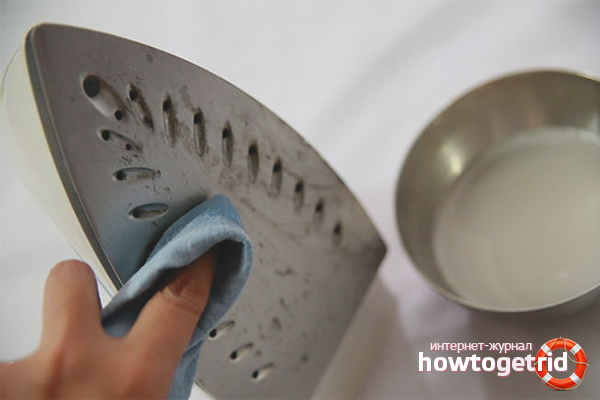

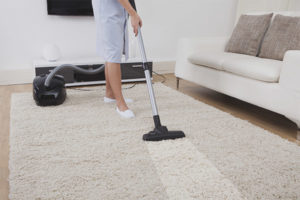

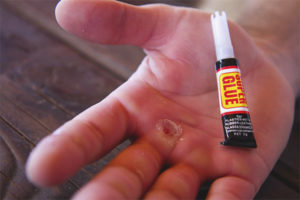

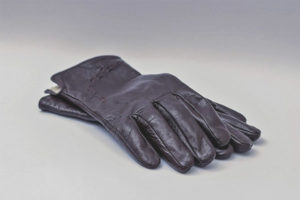


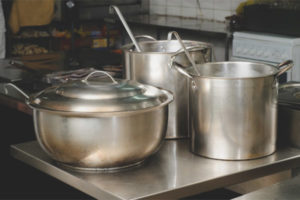
Submit